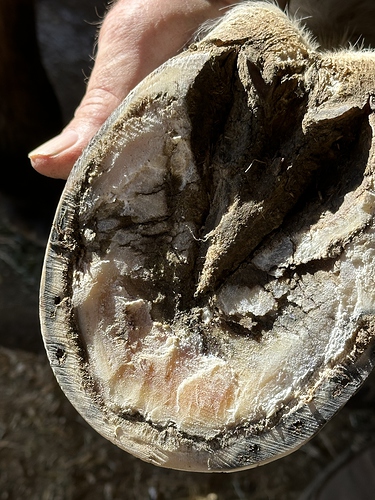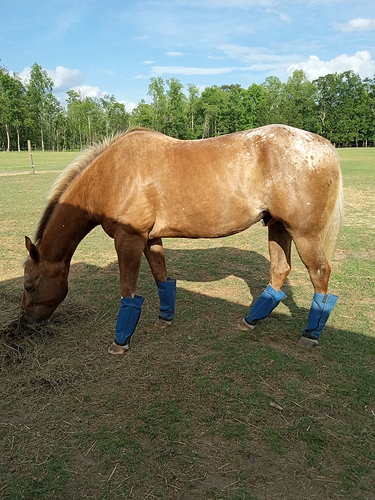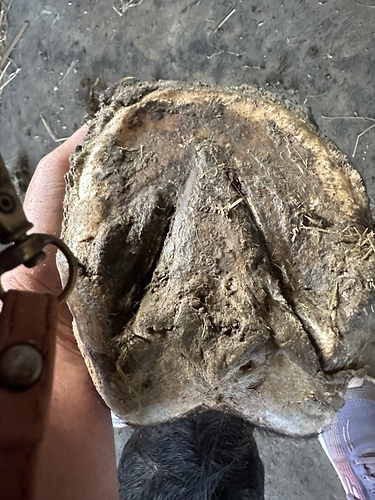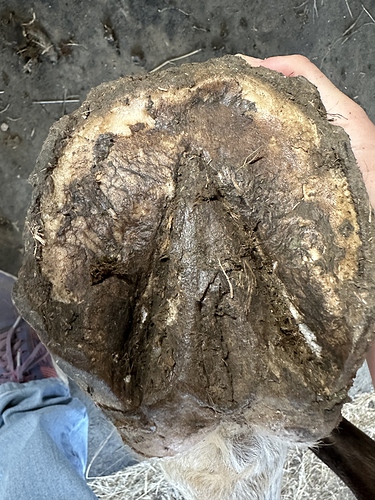I did a search but couldn’t find much that was recent.
Last Friday (24th) my horse was trimmed and my trimmer mentioned that his soles were somewhat retracted and that can happen with wet-to-dry conditions. He hadn’t been sore or anything and she didn’t seem overly concerned, but did mention I might want to put his boots on him for riding, etc. I was leaving for a week on vacation, so I didn’t worry too much. He walked away from the trim perfectly sound and showed no signs of soreness the next day before I left for vacay.
He lives in a pasture that stays dry even with rain (and we have had some). No mud, nice, level grass-covered ground for the most part (some dirt patches) and 24/7 access to dry, soft stalls that he definitely uses should it rain (horrors! he’s made of sugar!)
Anyhow, I came home Thursday and he’s been just fine in the pasture, though it’s not like he’s doing much but walking and stuffing his face. His pasture is only 1+ acre and he shares with another horse, so only enough grass to nibble, not a lot.
Got on this morning for a little ride and he started out fine but got progressively more tender-footed. Tripped some (usually a sign his footsies hurt). He trotted and cantered when asked, but was definitely ouchy (good sport for even doing it, ears up, bless his heart). I finally gave in and realized I needed to get off. He was visible tender even leading then when being turned on gravel or dirt. Poor bud.
I’m assuming this is the contracted soles that the farrier noticed. It was noticeable when I picked his feet. I picked them again really well and applied Durasole liberally and popped an Equioxx in a Beet Treat for him.
This barefoot horse has thin soles and can be tender-footed at times. He has Easy Boots that I wish I’d put on him this morning. He’s never had traditional shoes, just glue-ons for a few cycles, but honestly, I cannot afford those things. Yikes.
Is there anything else to do? It’s dusty dry at the barn, no mud anywhere, so that’s good. I do have the vet coming tomorrow for an unrelated reason.




